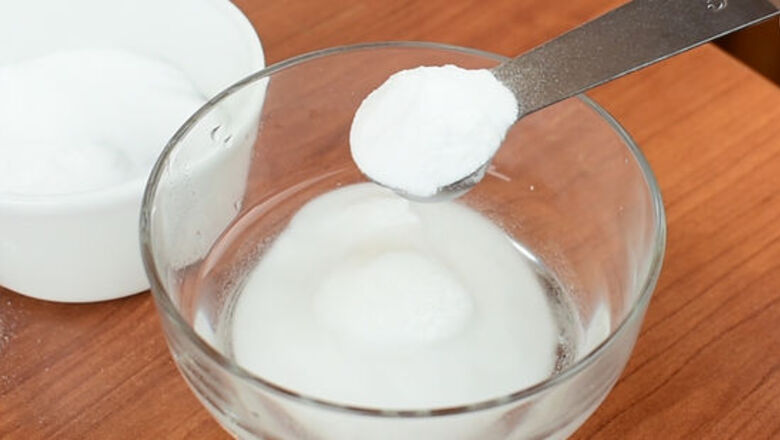
views
Using Baking Soda
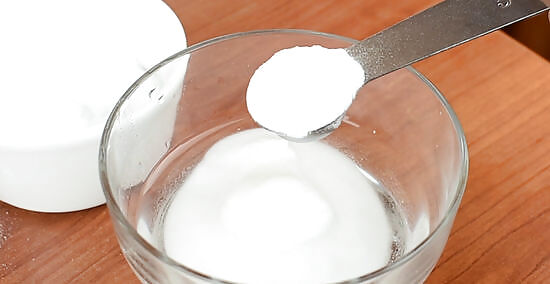
Make a baking soda paste. Baking soda, also known as sodium bicarbonate, is great for cleaning because it becomes a light abrasive when combined with water. It's safe to use on wood because it's mild yet effective. To make the paste, add the baking soda to a half cup of water. Put in small amounts at a time until the mixture thickens into a goop.
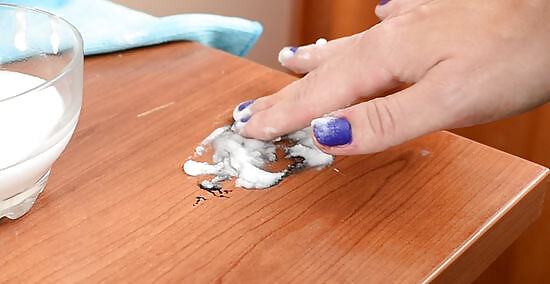
Spread the paste over the ink stain. Rub it in with your fingers, making sure to completely cover over the stain. You don't have to scrub at it: let the baking soda do the work. If you scrub too hard, you risk damaging the wood's surface. Wait 10 to 15 minutes.
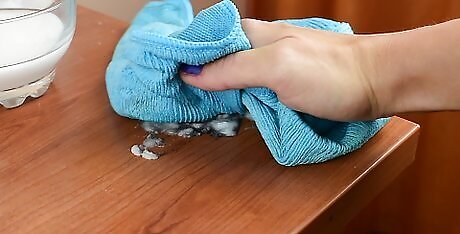
Clean up. Use a soft cloth dampened with water to remove the paste. Repeat the process until the ink is completely removed. For bigger stains, you might need to repeat this more times. Once you're satisfied with the results, finish by wiping the surface dry with another soft cloth.
Using Mineral Spirits
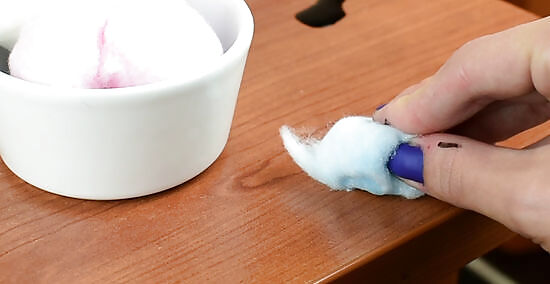
Test the mineral spirits. You can find mineral spirits in any hardware store. It is also known as turpentine substitute. Dampen a cotton ball lightly with the mineral spirits and wipe it on a hidden area of the furniture. If the cotton comes away with some of the finish on it, do not proceed any further.
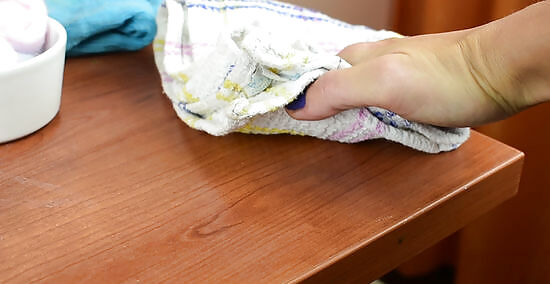
Moisten a cloth with mineral spirits. Buff the stained area lightly with the cloth. Then, clean it off with a wet rag. If the stain is still there, go on to the next step.
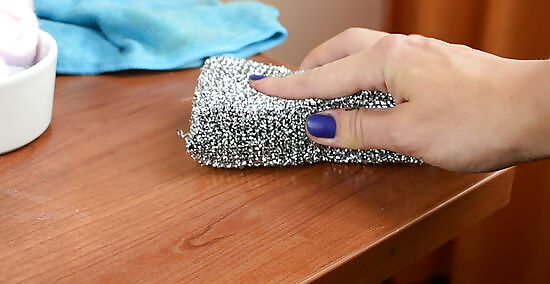
Use super-fine steel wool (0000). Rub the stained area using a piece of steel wool moistened with mineral spirits. Do this lightly and make sure you rub along the grain of the wood. Try to remove only as much finish as you have to. The less finish you remove, the easier it will be to refinish the furniture later.

Clean up the surface. With a fresh cloth, wipe away the mineral spirits and the shavings created by the steel wool. The stain should be completely gone by now. Proceed with refinishing the piece if needed. If not, protect the finish by waxing or polishing it as soon as possible.
Using Bleach
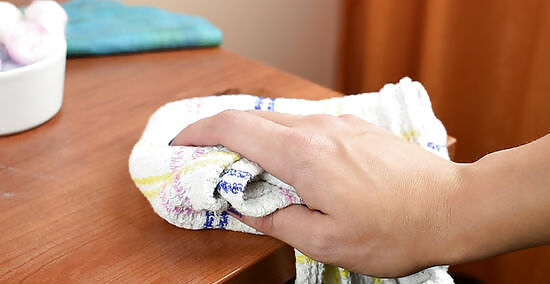
Prepare the wood's surface. Apply denatured alcohol on a clean, soft cloth and wipe the surface with the cloth to remove dirt and other impurities. If the wood has a finish, you'll need to remove it. You can either sand it off, which takes a lot of work, or you can use chemical strippers. If you choose to remove the finish using chemical strippers, do the work in a well-ventilated area. They contain very harsh chemicals, such as methylene chloride, which can do serious damage to your eyes, lungs, and skin. Shellac and lacquer can be removed with just denatured alcohol.
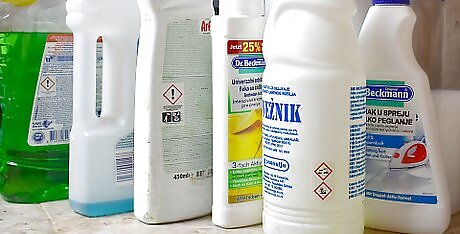
Determine what type of bleach to use. Common household bleach contains chlorine, which works for dye stains and may work to remove set-in ink. Another choice is a wood bleach containing oxalic acid. Oxalic acid is great for iron-based stains, which covers some types of ink. Yet another choice is two-part wood bleach. The first part contains sodium hydroxide and the second part has hydrogen peroxide. The former open up the pores of the wood, while the latter reacts to the former. You can find either type of wood bleach at any hardware store. As with any other harsh chemicals, be sure that your work area gets plenty of air. Use gloves to protect your skin and wear a mask to protect your lungs. When working with two-part bleach, use separate cloths for each part to prevent the two chemicals from reacting with each other.

Apply the bleach. Work it into the stained area with a clean cloth, avoiding getting any on the surrounding wood. Let it sit on the surface for 10 minutes. Repeat the process if necessary.
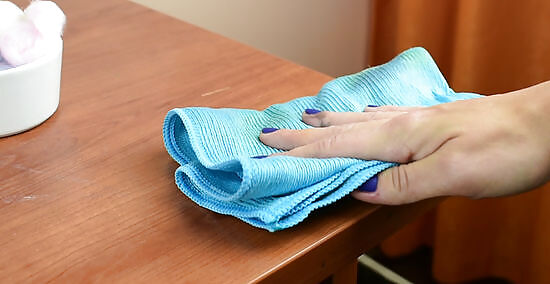
Clean up. Carefully wipe away the bleach with a cloth dampened in water. Avoid touching the surrounding wood. Follow up with another damp cloth and use it to wipe the entire surface. Next, towel it dry. Wait at least 24 hours before refinishing it.
Using Dish Soap

Make a cleaning solution using dish soap. This method is most effective for fresh ink spills. Dish-washing soap works because of its grease-fighting properties. It lifts the stain and prevents it from getting into the wood. Mix a half teaspoon of liquid dish-washing soap with a one third cup of hot water in a small bowl. Stir the solution to make lots of soap suds.
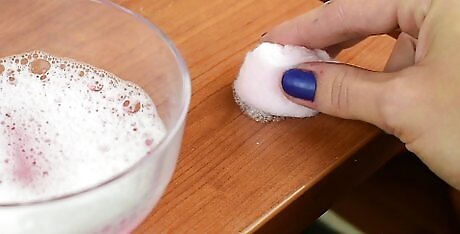
Test the finish. Before using any cleaner on wood, you should test how the finish reacts to it. Stick a cotton ball into the soap suds and rub it against a small section of the furniture. Try to find a spot out of view. If the soap damages the finish, stop. If it doesn't damage the finish, proceed with the next step.
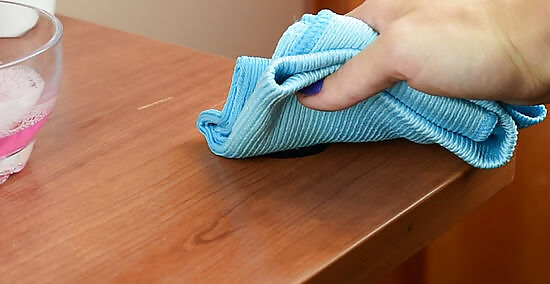
Gather some of the soap suds with a soft cloth. Make sure you're only getting into the suds, not in the solution. Then, gently wipe the ink stain with the soapy cloth. Follow up with a clean, damp cloth to rinse it off, then dry the area with a clean towel. If the stain is still visible, you can use superfine steel wool (number 0000) dipped in liquid wax. Rub the steel wool lightly onto the stained area. The steel wool should remove only a fine layer of the surface. It's important to be gentle so that you don't remove too much wood. Wipe away the shavings with a clean cloth.


















Comments
0 comment